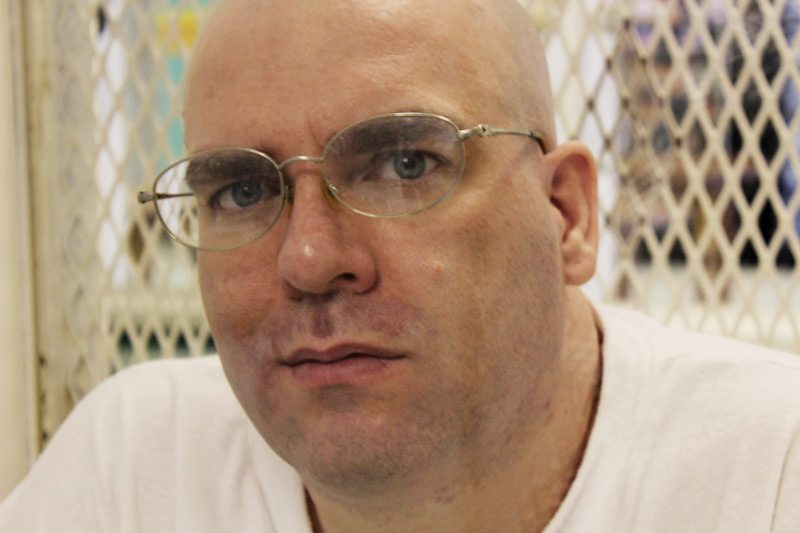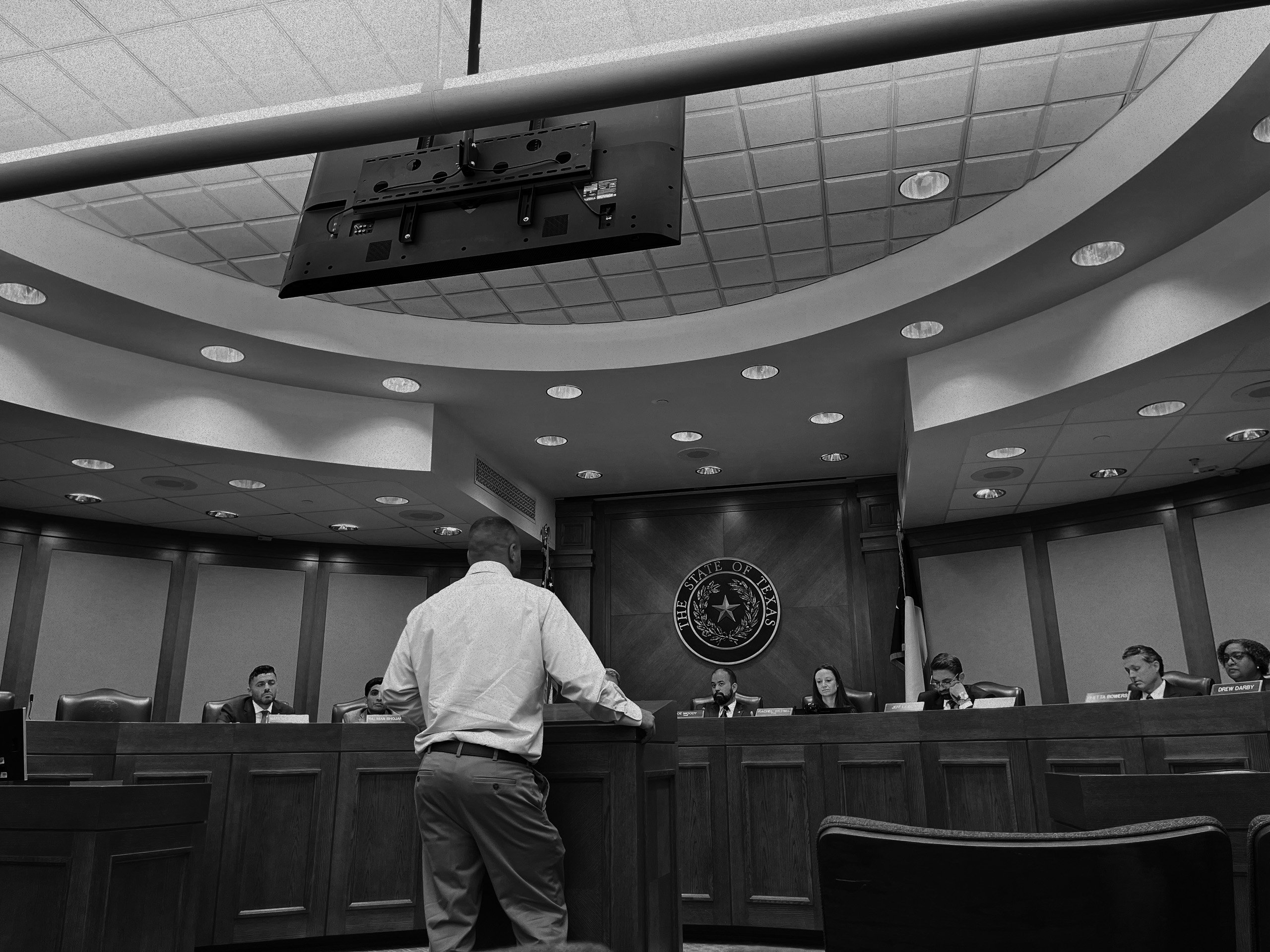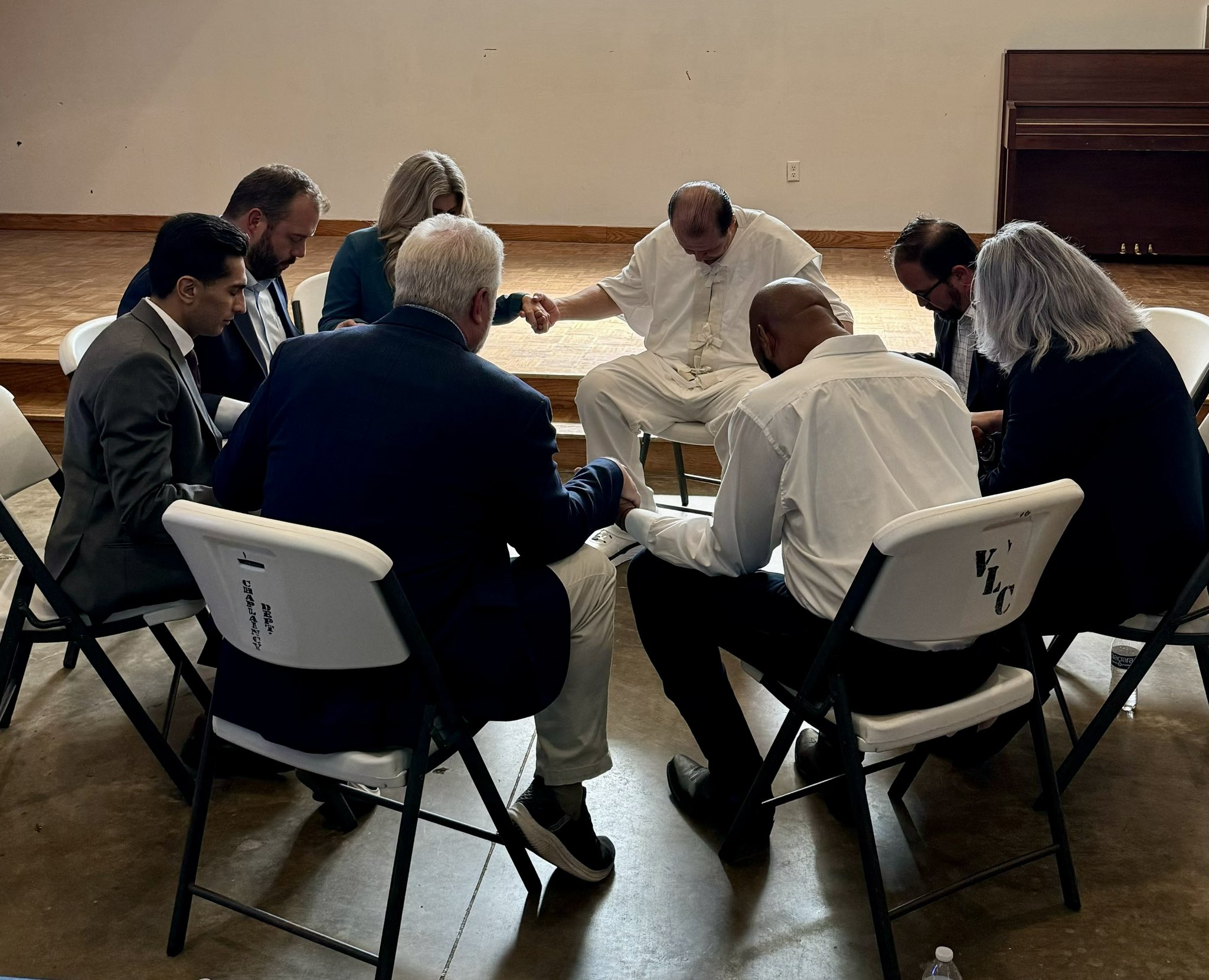
Is Larry Swearingen Innocent?
Nine forensic experts say Swearingen is on death row for a murder he couldn’t have committed, yet Texas courts won’t grant a new trial.

When a dead body is discovered, investigators can work out the likely time of death in a number of ways. The first clue is the bugs. It can take no time at all for blowflies and house flies to home in, searching for open wounds and orifices in which to lay their eggs. Between 12 and 24 hours later, when the body is cold to the core, those eggs hatch and the larvae feed on the flesh. The insects offer important clues for forensic pathologists, but it’s also important that they note what the outside temperature was in the days and weeks preceding the body’s discovery. That’s because the higher the temperature, the faster the insects will develop and once entomologists have identified the species, they can determine when they hatched and therefore how long that body has been there.
By day four, bacteria have started to break down the tissues and cells, releasing fluids into the body cavities that produce gases and cause the body to bloat. In summer, a human cadaver in an exposed location can be reduced to bones in just nine days—particularly if there are wild animals around.
Decomposition science is morbid but it can help solve heinous crimes. And it could be the key to figuring out if a man sitting on Texas’ death row was the killer in the gruesome 1998 murder of 19-year-old Melissa Trotter.
In February, nine forensic experts took the stand at an evidentiary hearing for convicted murderer Larry Swearingen to explain that precisely because of this decomposition science, they were sure that Trotter hadn’t been dead very long when her body was discovered— as little as a day; as long as 14. Either way, Swearingen couldn’t have killed her, they said, because at the time of her death he was in jail.
In March, the presiding judge, Fred Edwards, said he couldn’t rule on whether Swearingen should be given a retrial without referring back to the transcripts of the original trial, and that these would take some time to prepare. His decision finally came on October 1 when Edwards ruled Swearingen had failed to establish his innocence and recommended that the Court of Criminal Appeals not grant a retrial. In his ruling, Edwards described the field of histology—the well-established science of the anatomy of tissues and cells—as a “novel scientific theory” that required proof of reliability.
All of which means that Swearingen will remain on death row until the Court of Criminal Appeals makes its decision. If, as expected, the Court accepts Judge Edwards’s recommendations, Swearingen will be in line for his third, and perhaps final, execution date. And then Texas could be putting an innocent man to death.
The state’s evidence against 41-year-old Swearingen was compelling. Eyewitnesses claimed to have seen him with Melissa Trotter on the day she went missing, December 8th, 1998, from the Lone Star College-Montgomery campus in Conroe. The pair had been dating and Swearingen had been on the wrong side of the law before: His ex-girlfriend accused him of kidnapping her; he had admitted to stealing a truck; and fibers from Trotter’s clothing were found on the seat of his vehicle. After his arrest for Trotter’s murder, he penned a fake letter to investigators purporting to be from her real killer in the bizarre hope it would absolve him. (It didn’t; it just handed the state more evidence against him). And, most damning of all, investigators claimed they found half of Trotter’s panties on her body, which had been dumped in the Sam Houston National Forest, and the other half in a dumpster at the trailer park where Swearingen lived.
But now, 12 years since the trial, there are explanations for most, if not all, of this circumstantial evidence. Swearingen’s case is complicated, but the explanations make his plea for a retrial seem compelling.
Swearingen never agreed to a plea deal and has always maintained his innocence. He admits he was dating Trotter (in fact he says both of them were also dating other people), which accounts for her jacket fibers in his truck. Following his arraignment for Trotter’s murder, he claims that he tried to get his court-appointed lawyers to hire an investigator, but when they failed to do so, he made the peculiar decision to pen a fake letter from her would-be murderer in the hopes that it would spur his attorneys to change their minds.
Swearingen admits that he was hardly an upstanding citizen at the time. He had been accused of kidnapping an ex-girlfriend—an incident, he says, that stemmed from a dispute over money she’d loaned him for a horse trailer. (His girlfriend wanted the money back and told police that Swearingen had come to her house, beaten her up and held her there against her will. Swearingen denies this, and the case never went to court). He concedes that he was a different person back in 1998; he admits to test-driving a truck, signing the paperwork, and absconding with the vehicle. In other words, stealing it. But, Swearingen says, being a screw-up doesn’t make him a murderer. As he bluntly puts it: “I could be a green-eyed monster or rapist, but I should not be on death row.”
Swearingen’s attorney, James Rytting, says the pair of panties were the prosecution’s supposed smoking gun. But the problem with the evidence was that the forensics team searched his trailer—and the trailer park—twice before Trotter’s body was discovered and the investigators found nothing. The dumpster where the panties were eventually found could have been emptied several times in the interim.
“This wasn’t just one cop,” he says. “It was a team of investigators. Then after they find her body they find the [other part of the panties]. It’s a recipe for planting evidence or a bloody invitation for the person who really killed this girl to set Larry up.”
Most compelling of all, DNA testing of pubic hairs found on Trotter’s vagina as well as blood under her fingernails showed that neither belonged to Swearingen. “They took evidence of a friendship and morphed it into murder,” he says.
Rytting says the forensic pathologists who took the stand this spring concluded that Trotter’s internal organs were not only intact but showed minimal decomposition. The medical examiner at the time was able to dissect her pancreas, he says, and was able to section her brain using a surgical knife—what is known as “loafing.”
“You simply wouldn’t have been able to do this with organs from a body left out in the woods for 25 days,” says Rytting.
Rytting argues that histology is a core component of forensic pathology and very effective at determining the time of death. So for Judge Edwards to describe it as a novel scientific theory “is ridiculous.”
The murder occurred in winter, but the average high for December 1998 was in the 60s—in other words, it was mild, and if Trotter’s body had been lying there for 25 days, there was little or no frost to slow down the decomposition. In 2007, even the original medical examiner who performed the autopsy on Trotter recanted her trial testimony in an affidavit, altering her opinion to say that Trotter’s body could not have been in the forest more than 14 days, placing the time of death after December 19. (Swearingen had been in jail on outstanding traffic warrants since December 11.) She would later claim, however, that Rytting had forced her to recant but he says this is crazy. “She was the chief medical examiner of Harris County for goodness sake,” he says. “She wasn’t some shrinking violet.”
The witness identification is questionable too, Rytting says. The person who apparently got the best view of the man Trotter was with that day described him as a big blond man. “And Larry is as dark and hairy as anyone you’ll ever see,” Rytting says. “It’s absurd.”
As for the DNA samples, Rytting says he has asked the FBI to punch them into what’s known as the CODIS database—a repository of forensic DNA evidence collected from crime scenes—to see if there’s a match. It’s unclear if the FBI has done so.
“I believe if any court looks at this fairly, it will not rule against him,” Rytting says. “Especially if you look at the way the hearing was handled and findings were made.”
Swearingen has been on death row since 2000. I meet him one morning in November in the visitor wing of the Polunsky Unit in the east Texas town of Livingston. He sits in a small interview cell, behind bulletproof glass wearing white overalls. He has a shaved head, glasses and looks directly at me when answering my questions. In the past 12 years, he has been given two execution dates but received stays both times.
As you might expect, Swearingen is well acquainted with the minutiae of his case. But he’s gone further than most, conducting his own research and issuing open records requests to obtain information from the state. He wrote to retired pathologist Glen Larkin for help with the forensics of body decomposition. “At first he thought the autopsy report was a fake,” Swearingen tells me. “He thought any competent pathologist would have realized these organs would have liquefied within the first 10 to 14 days.
“A body left in the woods that long would have lost 90 percent of its body weight. She had only lost 4 pounds. … A whole new picture develops with forensics. Give me a new trial and see what happens. Put this evidence before a jury.”
Swearingen has a son and three daughters by three different mothers, but he keeps in touch with only his son and a step-daughter. He married a German penpal, Wiebke, and she visits him, but he says it’s not a place he’d like his kids to visit. “I love my kids, I love my wife, my family, my mom and all that, but I also understand they have lives outside.”
Swearingen’s first execution date was scheduled for January 27, 2009. After that date was stayed, he says he became complacent. When he heard about his second date in 2011, he was visiting with his grandparents. They cried. Swearingen stared straight ahead. “Very little gets under my skin, and I don’t show emotions very well,” he says, admitting that this trait has probably hurt him over the years, that it gives the impression he’s callous and arrogant. He puts it down to experiencing his father’s death in a motorcycle accident when he was 9 years old.
When I push Swearingen to describe what his life has been like since his conviction, he shows a rare glimpse of emotion. “I can remember everything from the day I was arrested,” he tells me. “The first time in my life I got down on my knees and prayed was my first day here. I think about the last time I used the bathroom in private; going to the refrigerator to get a snack; feeling grass on my feet; sleeping without somebody shining a light in my face.”
He’s also concerned that Melissa Trotter’s killer is still at large. “There are a bunch of theories as to who did it,” he says. “As far as I know it’s the I-45 serial killer. I don’t know. She was seeing numerous individuals aside from myself.
“This individual is still in the community where my children are … part of me, from a Christian standpoint, prays for him, but part of me hopes he dies a painful death because he’s taken me from the people who love me—aside from what Melissa’s family have been through.”
A clue to who this killer is could be in an affidavit submitted to the district court in Montgomery County in 2007 as part of Swearingen’s appeal. It was from a former colleague of Trotter’s, Lisa Roberts. The pair worked together in a call center at the League Line Marina and Resort on Lake Conroe. “Around November 1998, Melissa began receiving phone calls that seemed to upset her,” she wrote. She’d break down, crying. A few times, the calls were patched through to Roberts. “You’re a fucking bitch,” the voice said in one of those calls. “I’m going to choke the life out of you.” In another call, Roberts wrote, “he told me that he was going to lick Melissa’s cheek, and right before she took her last breath, he said ‘I’m going to kiss her lips for the last time.’”
The man—Roberts presumed it was the same one who had called her—even picked Trotter up from work a few times. Each time, she wrote, Trotter seemed distraught but went with him because otherwise, Trotter told Roberts, it would “cause problems.”
“I do know who Larry Swearingen is,” Roberts wrote. “I went to school with him. The man who picked Melissa up was not Larry Swearingen. The voice on the phone was not Larry Swearingen’s voice.”
In December 2008, the Texas Court of Criminal Appeals rejected Swearingen’s claims that the state withheld evidence and presented false testimony during the trial, in particular that prosecutors hadn’t heard this testimony from Lisa Roberts.
The question is whether the Court of Criminal Appeals will now give Swearingen another chance to prove he wasn’t Melissa Trotter’s killer.


